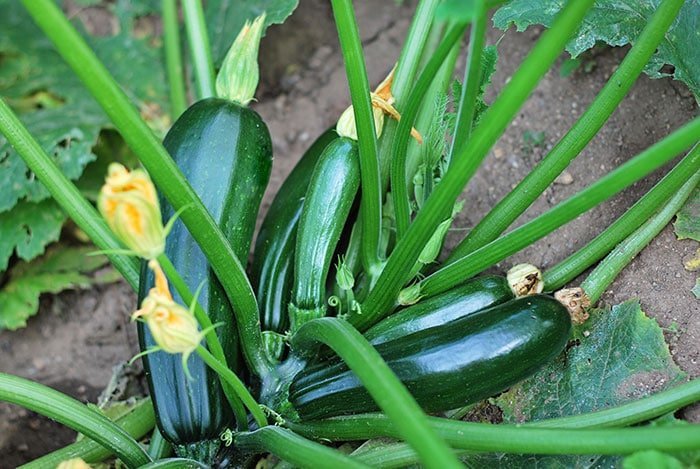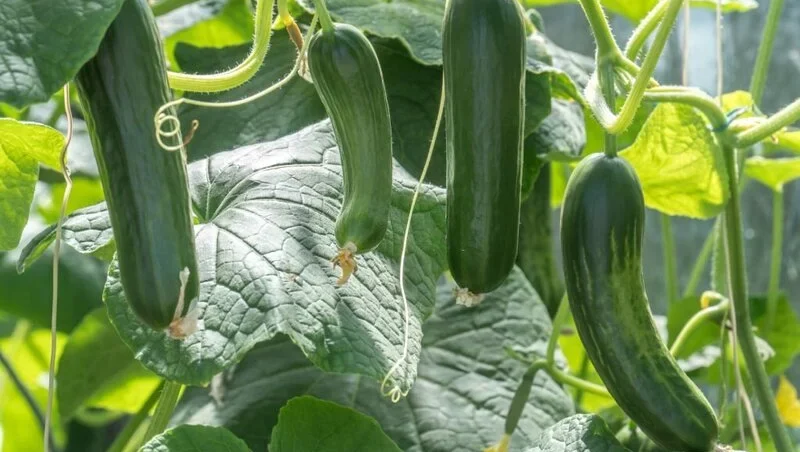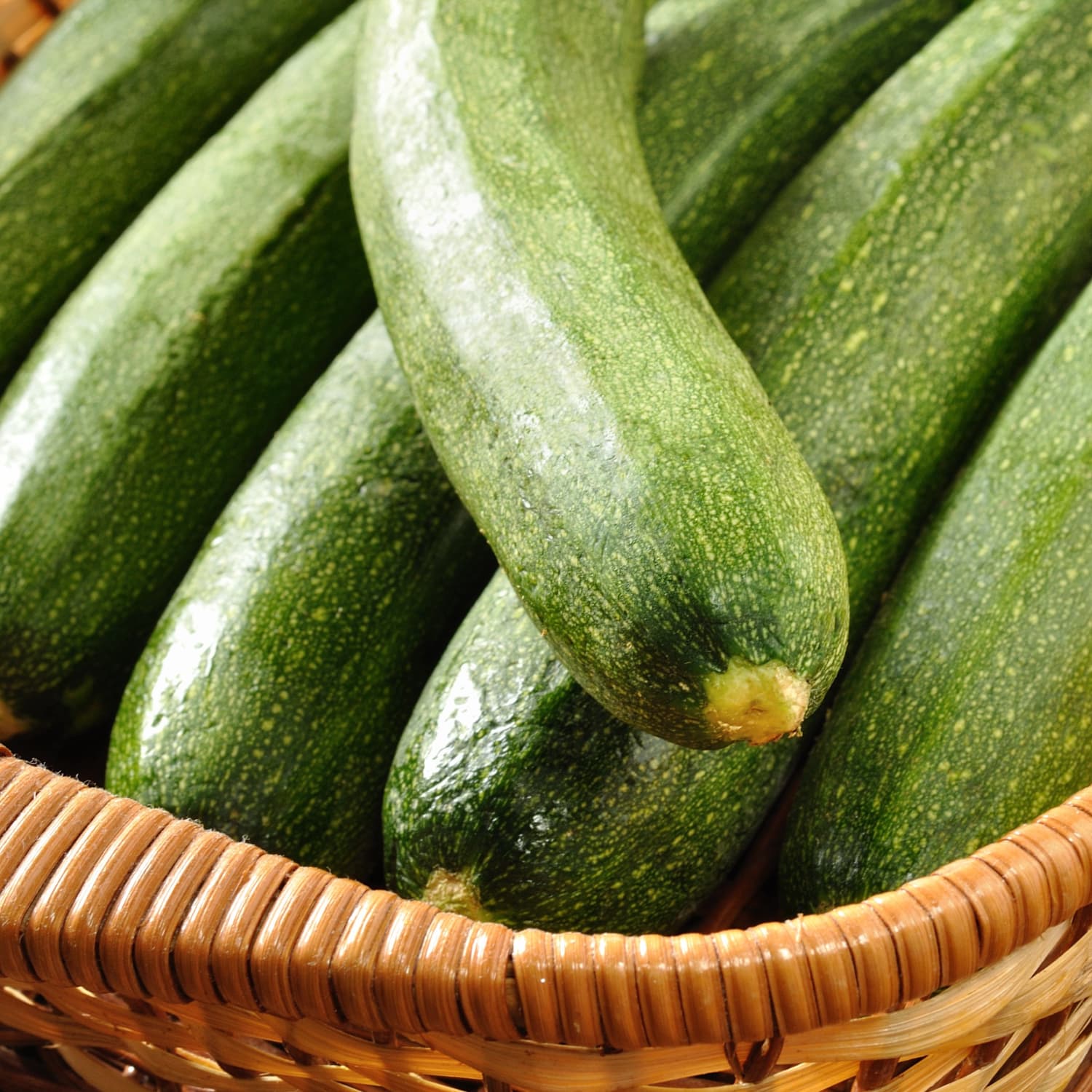You’ll be amazed by the abundance that a single zucchini plant can bestow upon your garden. As the warm summer sun kisses its vibrant leaves, this versatile vegetable bursts forth in a bountiful explosion of glossy green goodness. But just how many zucchinis can you expect from a single plant? Prepare to be astonished as we unveil the secrets of nature’s productivity and guide you through the remarkable journey of one humble zucchini plant.

Factors That Affect Zucchini Production
Zucchini, a popular summer squash, can be a prolific producer if the right factors are in place. Several key factors can have a significant impact on the success and yield of your zucchini plants. Understanding these factors and taking appropriate measures can help you maximize your zucchini production and enjoy a bountiful harvest.
Climate
The climate is an important factor that influences zucchini production. This plant thrives in warm and sunny conditions, with temperatures between 70 and 85 degrees Fahrenheit being ideally suited for its growth. Zucchini plants are sensitive to frost and do not tolerate cold temperatures. Therefore, it is crucial to ensure that you plant your zucchini when the weather is consistently warm to prevent frost damage or stunted growth.
Soil
The quality of the soil plays a vital role in zucchini production. Zucchini plants require well-draining soil that is rich in organic matter. Before planting, it is essential to prepare the soil properly by loosening it and incorporating organic compost or well-rotted manure. This will enhance soil fertility and improve moisture retention, promoting healthy root development and overall plant growth.
Fertilizer
Proper fertilization is crucial for achieving high zucchini yields. A balanced fertilizer with a higher proportion of nitrogen can benefit zucchini plants during their early growth stages. However, excessive nitrogen can result in lush vegetative growth at the expense of fruit production. Once the zucchini plants start flowering, it is recommended to switch to a fertilizer with a higher phosphorus and potassium content to support fruit development. Regular application of organic matter, such as compost or compost tea, can also provide additional nutrients and improve soil health.
Planting Density
The spacing between zucchini plants can significantly impact their productivity. Planting zucchini too close together can lead to overcrowding, restricted airflow, and increased risk of diseases. On the other hand, planting them too far apart can result in wasted space and reduced overall yield. For bush varieties, a spacing of around 2-3 feet between plants is generally sufficient. For vining or climbing varieties, providing enough space for the plants to spread and grow, typically around 3-5 feet apart, is recommended.
Zucchini Varieties with High Yields
Choosing the right zucchini variety can make a significant difference in your overall yield. Some zucchini cultivars are known for their high productivity and reliable performance. Here are four popular zucchini varieties that are known for their abundant yields:
Black Beauty
Black Beauty is one of the most popular and widely grown zucchini varieties. It produces glossy, dark green fruits that are tender and flavorful. This variety is known for its vigorous growth and high yield potential. Additionally, Black Beauty has good disease resistance, making it a reliable choice for novice gardeners.
Golden Delight
Golden Delight is a yellow zucchini variety that offers a unique twist to traditional green zucchinis. Its vibrant golden fruits are deliciously sweet and tender. This variety produces prolifically and can add a vibrant pop of color to your garden and culinary creations.
Cocozelle
Cocozelle is an Italian heirloom variety prized for its exceptional taste and texture. It produces elongated fruits with dark green skin and pale green stripes. Cocozelle has a robust growth habit and high yield potential, making it a favorite among gardeners who value both flavor and productivity.
Costata Romanesco
Costata Romanesco, also known as the Italian ribbed zucchini, is a visually striking variety that boasts distinctive ribbing on its pale green skin. This heirloom variety offers a rich, nutty flavor and a firm, meaty texture. Costata Romanesco is known for its high yield and can be an excellent addition to your zucchini garden.
Planting Zucchini
Properly planting zucchini is crucial for establishing healthy plants and ensuring optimal productivity. Follow these steps to give your zucchini a strong start:
Preparing the Soil
Prepare the soil before planting by removing any weeds, rocks, or debris. Loosen the soil to a depth of about 8-10 inches using a garden fork or tiller. Incorporate organic matter, such as compost or well-rotted manure, to improve the soil’s fertility and moisture retention. Smooth out the soil and create raised beds or mounds to aid with drainage.
Seed Selection
Select high-quality zucchini seeds from a reputable source. Consider the specific variety you want to grow and any specific requirements it may have. Look for seeds that are plump, uniform in size, and free from any signs of damage or disease. It is recommended to start the seeds indoors, 2-4 weeks before the last expected frost date in your area, to give them a head start.
Germination
Zucchini seeds require warm soil for germination. The ideal soil temperature for zucchini seed germination is around 70-95 degrees Fahrenheit. Plant the seeds at a depth of 1-2 inches and water thoroughly. Ensure the soil remains consistently moist but avoid overwatering, as it can cause the seeds to rot. Germination typically occurs within 7-10 days.
Transplanting
Once the seedlings have developed their first true leaves and all danger of frost has passed, they are ready for transplanting into the garden. Harden off the seedlings by gradually exposing them to outdoor conditions over a period of 7-10 days. Transplant the zucchini seedlings into the prepared soil, ensuring they are spaced properly according to the variety’s requirements. Gently firm the soil around the seedlings and water thoroughly.
Caring for Zucchini Plants
Providing adequate care throughout the growing season is essential for healthy zucchini plants and successful fruit production. Here are important aspects to consider when it comes to caring for your zucchini plants:
Watering
Maintaining consistent moisture levels is crucial for zucchini plants to thrive. Water the plants deeply, providing enough water to saturate the root zone. Avoid frequent shallow watering, as it can lead to shallow root development. Monitor the soil moisture regularly, especially during hot and dry periods, and adjust watering accordingly.
Mulching
Mulching around zucchini plants can offer numerous benefits. A layer of organic mulch, such as straw or wood chips, helps conserve soil moisture, suppress weed growth, and regulate soil temperature. It also acts as a protective barrier, preventing soil-borne diseases from splashing onto the leaves and fruits. Apply mulch around the base of the plants, leaving a gap around the stem to prevent rot.
Fertilizing
Nutrient deficiencies can hinder zucchini plant growth and reduce their productivity. Regular fertilization is key to ensuring adequate nutrient availability. Start by incorporating organic matter into the soil before planting, as mentioned earlier. Once the plants begin producing flowers, switch to a balanced fertilizer with higher phosphorus and potassium content to promote fruit development. Follow the manufacturer’s instructions for application rates and frequency.
Pruning
Pruning zucchini plants can help maintain their vigor and improve air circulation, which can prevent diseases. Remove any yellowed or damaged leaves and prune off any excessive side shoots or runners. However, be cautious not to prune excessively, as it may reduce the overall yield. Prune sparingly and only when necessary.

Harvesting Zucchini
Knowing when and how to harvest zucchini is crucial to ensure optimal flavor and tenderness. Here are some guidelines to follow:
Determining Maturity
Zucchini is typically harvested when the fruits are still young and tender. The ideal size for harvesting is when the zucchini reaches around 6-8 inches in length and has a glossy skin. If left on the plant for too long, zucchinis can grow larger and become tough and fibrous.
Harvesting Technique
To harvest zucchini, use a sharp knife or garden shears to cut the fruit from the stem, leaving a short stub. Avoid twisting or pulling the fruits off the vine, as this can damage the plant. Harvest regularly to encourage continuous fruit production and prevent the fruits from becoming oversized.
Repeating Harvests
Zucchini plants can be highly productive, often yielding new fruits every few days during peak season. Harvesting the mature zucchinis promptly not only ensures the best quality but also encourages the plant to produce more. Check your zucchini plants regularly and harvest any mature fruits to maintain a steady supply throughout the growing season.
Dealing with Common Challenges
Zucchini plants can face various challenges, including pests, diseases, and pollination issues. Proactively addressing these challenges can help protect your plants and maintain a healthy, productive crop.
Pests
Common pests that can affect zucchini plants include cucumber beetles, squash bugs, and aphids. Regularly inspect your plants for any signs of pest activity, such as chewed leaves, wilting, or yellowing. Use physical barriers, such as row covers, to protect young plants from pests. Consider implementing natural pest control methods, such as handpicking or spraying with insecticidal soap, to reduce pest populations.
Diseases
Zucchini plants are susceptible to several diseases, including powdery mildew, bacterial wilt, and blossom end rot. To prevent the spread of fungal diseases, avoid overhead watering and ensure proper air circulation around the plants. Monitor the plants closely for any signs of disease, such as spots, mold, or wilting leaves. Remove and destroy any affected plant parts promptly to prevent further infection.
Pollination Issues
Poor pollination can result in misshapen or underdeveloped zucchinis. Zucchini plants rely on pollinators, such as bees, to transfer pollen between flowers. If pollination is limited, consider hand-pollinating the plants by using a small brush or cotton swab to transfer pollen from the male flowers to the female flowers. Additionally, attracting pollinators to your garden by planting a variety of flowers can help improve pollination success.
Optimal Growing Conditions for Zucchini
Creating optimal growing conditions for zucchini plants is crucial to promote healthy growth and maximize yield. Consider the following factors when cultivating zucchini:
Temperature
Zucchini plants thrive in warm temperatures, with an optimal range of 70 to 85 degrees Fahrenheit. They can tolerate slightly cooler temperatures but are sensitive to frost. Planting after the last frost date in your area and providing protection during sudden temperature drops can help ensure the plants’ survival and productivity.
Sunlight
Zucchini plants require full sun exposure to thrive. They need a minimum of 6-8 hours of direct sunlight daily. Choose a sunny location in your garden that is free from shading by trees or tall structures.
Moisture
While zucchini plants require consistent moisture, they are susceptible to root rot if the soil becomes waterlogged. Aim for well-drained soil that retains moisture without becoming overly saturated. Regularly check the soil moisture levels and water deeply when the top inch of soil feels dry.
pH Levels
Zucchini plants prefer a slightly acidic to neutral soil pH range of 6.0 to 7.0. Test the soil’s pH using a soil testing kit and make any necessary adjustments by adding lime to raise the pH or sulfur to lower it. Maintaining proper pH levels ensures optimal nutrient uptake and overall plant health.
Potential Zucchini Yields
The yield of zucchini plants can vary depending on various factors, including growing conditions, variety, and care. While it is challenging to provide an exact number of zucchinis per plant, the average yield typically ranges from 3 to 9 pounds per plant over the course of the growing season. However, with proper care and ideal conditions, it is not uncommon for a single zucchini plant to produce 6-10 pounds or more.
Single Plant Productivity
With proper care, each zucchini plant can produce numerous fruits during its productive lifespan. Continuous harvesting of mature zucchinis encourages the plant to keep producing new fruits, resulting in a higher total yield. Harvesting promptly and providing optimal care throughout the growing season can help ensure that each plant reaches its maximum productivity.
Weight of Individual Zucchinis
The average weight of individual zucchinis can vary depending on the variety and time of harvest. Harvesting zucchinis when they are around 6-8 inches in length typically results in fruits weighing between 1 and 2 pounds. However, zucchinis can grow larger if left on the plant for an extended period. It is important to note that larger zucchinis may be less tender and have more pronounced seeds.

Maximizing Zucchini Production
If you want to maximize your zucchini production, there are several strategies you can employ throughout the growing season:
Companion Planting
Companion planting involves growing complementary plants alongside your zucchini to enhance growth and increase yield. Some beneficial companions for zucchini include marigolds, nasturtiums, and herbs like basil and dill. These plants can attract pollinators, repel pests, and provide a diverse environment that promotes overall plant health.
Succession Planting
Succession planting involves staggering your zucchini plantings to ensure a continuous supply of fresh zucchinis. By planting new zucchini seeds or seedlings every few weeks, you can extend your harvest period and prevent a glut of zucchinis all at once. This also helps ensure that you have a steady supply of young and tender zucchinis throughout the growing season.
Proper Spacing
Providing adequate spacing between zucchini plants allows for optimal air circulation, reduces competition for nutrients and water, and helps prevent the spread of diseases. Follow the spacing recommendations for your specific zucchini variety. Adequate spacing promotes healthier plants and better fruit development, ultimately leading to higher yields.
Pollination Tips
Enhanced pollination can increase the fruit set and yield of your zucchini plants. Consider attracting pollinators to your garden by planting flowers that are rich in nectar and pollen, such as lavender, sunflowers, or bee balm. Additionally, hand-pollination can be beneficial, especially if pollinators are scarce or if the weather is unfavorable for their activity.
Using Zucchini Harvest
Once you have successfully harvested your zucchinis, there are numerous ways to put them to good use:
Recipes
Zucchinis are incredibly versatile vegetables that can be used in a wide range of recipes. From zucchini bread and muffins to stir-fries, salads, and even zucchini noodles, there are endless possibilities to explore. Experiment with different flavors, cooking techniques, and seasonings to make the most of your zucchini harvest.
Preservation Methods
If you have a surplus of zucchinis, consider preserving them for later use. Zucchinis can be blanched and frozen for long-term storage. They can also be pickled, canned, or dried. Additionally, grated zucchini can be frozen in pre-measured portions for convenient use in baking recipes.
Donating or Sharing
If you find yourself with more zucchinis than you can use, consider donating the excess to local food banks, community organizations, or sharing them with friends and neighbors. Sharing the abundance of your harvest can benefit others and foster a sense of community.
In conclusion, achieving a successful zucchini harvest is a result of understanding and implementing the essential factors that affect production. From providing the right growing conditions and choosing high-yielding varieties to properly caring for the plants and managing common challenges, every step plays a crucial role in maximizing zucchini production. By following the guidelines provided in this comprehensive article, you can increase your chances of a bountiful zucchini harvest and enjoy the delightful taste and versatility of this summer squash.





